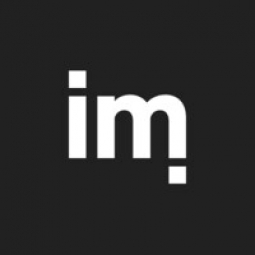Technology Category
- Application Infrastructure & Middleware - Event-Driven Application
- Cybersecurity & Privacy - Application Security
Applicable Industries
- Cement
- National Security & Defense
Applicable Functions
- Maintenance
- Quality Assurance
Use Cases
- Supply Chain Visibility
- Tamper Detection
About The Customer
TechSoup Global is a nonprofit organization based in San Francisco, California. The organization serves as a one-stop resource for technology needs for other nonprofits. They provide free online information, resources, and support. TechSoup Global also offers TechSoup Stock, a product philanthropy service where nonprofits can access donated and discounted technology products provided by corporate and nonprofit technology partners. The product donation program has enabled organizations to save over $1.4 billion in expenses as of June 2009. The organization processes donations through credit cards, making its web-based transaction processing infrastructure a prime target for hackers.
The Challenge
TechSoup Global, a nonprofit organization based in San Francisco, California, provides other nonprofits with technology resources and support. Their product donation program, TechSoup Stock, allows nonprofits to access donated and discounted technology products, saving organizations over $1.4 billion in expenses as of June 2009. However, the organization faced a significant challenge in securing its web-based transaction processing infrastructure, which was a prime target for hackers due to the processing of donations through credit cards. After an unsuccessful breach attempt, TechSoup realized the need to go beyond traditional perimeter and desktop protection. The organization needed a comprehensive security solution that would effectively monitor and protect its applications from hackers, prevent the loss of sensitive data, and facilitate PCI compliance. The solution also needed to be easy to use and deploy, and require no changes to applications or the network.
The Solution
TechSoup Global selected Imperva’s SecureSphere Web Application Firewall for its ability to provide operational visibility with little overhead and no changes to the applications. SecureSphere delivered total visibility into data access and usage, with an easy-to-use interface that provided granular policy creation and enforcement to prevent unauthorized access or changes to data on TechSoup’s web applications and databases. The solution protects web applications and sensitive data against sophisticated attacks, such as SQL injection, cross-site scripting (XSS), and brute force attacks. It also prevents online identity theft and data leaks from applications. Imperva’s Dynamic Profiling technology automatically builds a model of legitimate behavior and recognizes application changes over time, ensuring that SecureSphere’s security policies are up-to-date and accurate, without manual tuning. SecureSphere met TechSoup’s needs for flexible, non-intrusive deployment, and the ability to manage their environment with the smallest of footprints.
Operational Impact
Quantitative Benefit

Case Study missing?
Start adding your own!
Register with your work email and create a new case study profile for your business.
Related Case Studies.

Case Study
System 800xA at Indian Cement Plants
Chettinad Cement recognized that further efficiencies could be achieved in its cement manufacturing process. It looked to investing in comprehensive operational and control technologies to manage and derive productivity and energy efficiency gains from the assets on Line 2, their second plant in India.

Case Study
Data Capture for Afghanistan Forces
Electronic equipments on the field of Afghanistan provided information on the status of the vehicle and to identify potential threats surrounding it to the British Force. The monitoring and interpretation of this data requires robust and sophisticated digitization for data capture and communication.

Case Study
Digital Transformation of Atlanta Grout & Tile: An IoT Case Study
Atlanta Grout & Tile, a Tile, Stone & Grout restoration company based in Woodstock, Georgia, was facing challenges with its traditional business model. Despite steady growth over the years, the company was falling behind the web revolution and missing out on the opportunity to tap into a new consumer base. They were using independent software from different vendors for each of their department information and workforce management. This resulted in a lot of manual work on excel and the need to export/import data between different systems. This not only increased overhead costs but also slowed down their response to clients. The company also had to prepare numerous reports manually and lacked access to customer trends for effective business decision-making.

Case Study
Major Aerospace Company Automates Asset Management
The O&M division of an aerospace and global security company was using spreadsheets to manually track more than 3,000 assets assigned to students and staff. Maintaining audit trails for this high volume of equipment became increasingly time-consuming and challenging. The chore involved knowing precisely what equipment was on hand, what had been issued, its location and the name of the custodial owner of each item. Every aspect of this task was carried owner of each item. Every aspect of this task was carried out by individuals with spreadsheets. Manually documenting the full lifecycle of each asset added to the burden. This included tracking maintenance requirements and records, incidents and damages, repairs, calibrations, depreciation, and end-of-life data.

Case Study
Revolutionizing Construction Equipment Rental: A Case Study on ProsRent and ENO8
ProsRent, a startup that won the 'Best Financial Opportunity' and 'Best Pitch' at CodeLaunch 2016, aimed to revolutionize the way construction professionals source and rent heavy equipment. In the construction industry, project managers and contractors typically rent heavy equipment from supply companies. However, predicting inventory can be challenging, and finding the required equipment at the right time and place can be a hassle. If the preferred vendor doesn't have the required equipment, it results in wasted time and money in searching for it, often leading to higher costs due to non-preferred rates and increased delivery costs if the vendor is located far from the job site. Suppliers, on the other hand, desired access to a wider base of trusted renters that they didn't have to vet themselves and wanted to offer dynamic rental pricing based on demand and availability in their market. ProsRent's challenge was to produce a minimum viable product that was fast and first to market but also strong enough to engender loyalty and repeat business from the target market.




